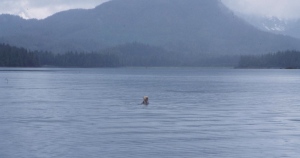Some years ago, I belonged to a History of Medicine online discussion group. Every few months, a query would arrive from a newbie asking what was the disease once known as the marthambles – and the questioner would immediately be outed as a Patrick O’Brian tragic, for it is one of many ailments successfully treated by Stephen Maturin in O’Brian’s highly popular Aubrey/Maturin novels, set in the Royal Navy during the Napoleonic War. The problem is, marthambles doesn’t exist. Sometimes a historical novelist is allowed – whisper it quietly – to make things up! Continue reading

- Since 2012, this blog has been selected for preservation by the Australian National Library in its Pandora Archive.
Copyright Notice
© Marion Elizabeth Diamond and Historians are Past Caring, 2012-2016 Unauthorized use and/or duplication of this material without express and written permission from this blog’s author is strictly prohibited. Excerpts and links may be used, provided that full and clear credit is given to Marion Diamond and Historians are Past Caring with appropriate and specific direction to the original content.Blog Stats
- 377,200 hits
-
Join 666 other subscribers
Follow me on Twitter
@Diamond_MarionSearch this blog
Calendar
-
Recent Posts
Archives
Australian history
- Australian Dictionary of Biography
- Decisions of the Superior Courts of New South Wales
- Documenting a Democracy
- Guide to Australian Business Records
- Lachlan and Elizabeth Macquarie Archive
- London Lives: Crime, Poverty and Social Policy in the Metropolis
- Moruya and District Historical Society Blog
- Ozwords
- Papers Past
- Picture Australia
- Queensland Historical Atlas
- Queensland Places
- SEARCH: South Eastern Australian Recent Climate History
- SETIS: The Sydney Electronic Text and Image Service
- The Proceedings of the Old Bailey, 1674-1913
- TheTiger's Mouth
- Trove: at the National Library of Australia
Blogroll
Just for Fun
Useful stuff for historians
- BBC: In Our Time with Melvyn Bragg
- British Library: advice for researchers in history and classics
- Calendrica
- Canadiana
- Connected Histories
- Dictionary of Canadian Biography online
- Discover Yale Digital Content
- Early Modern Online Bibliography
- Europeana
- Gallica
- Google Ngram Viewer
- The Guardian's list of academic blogs
- Wikipedia's list of online newspaper archives, by country








